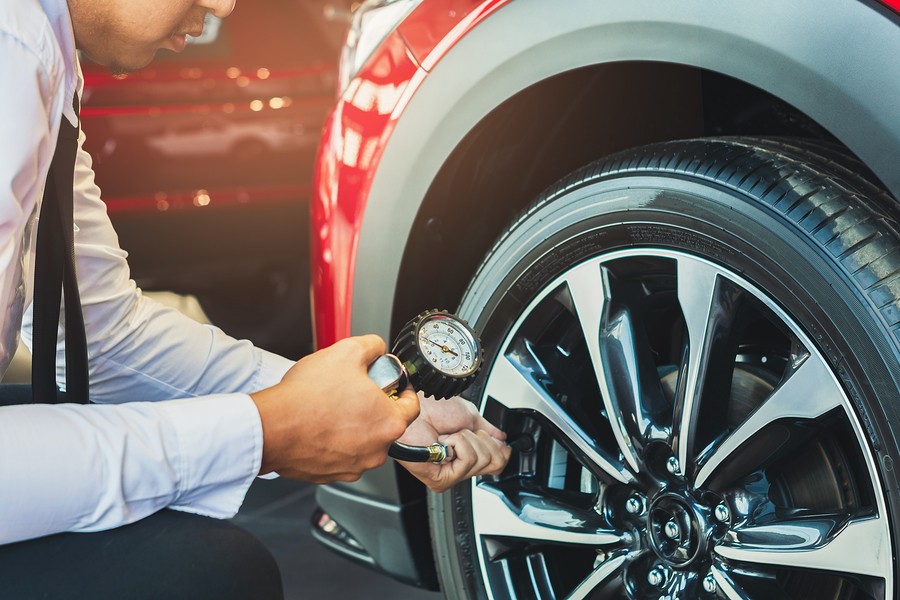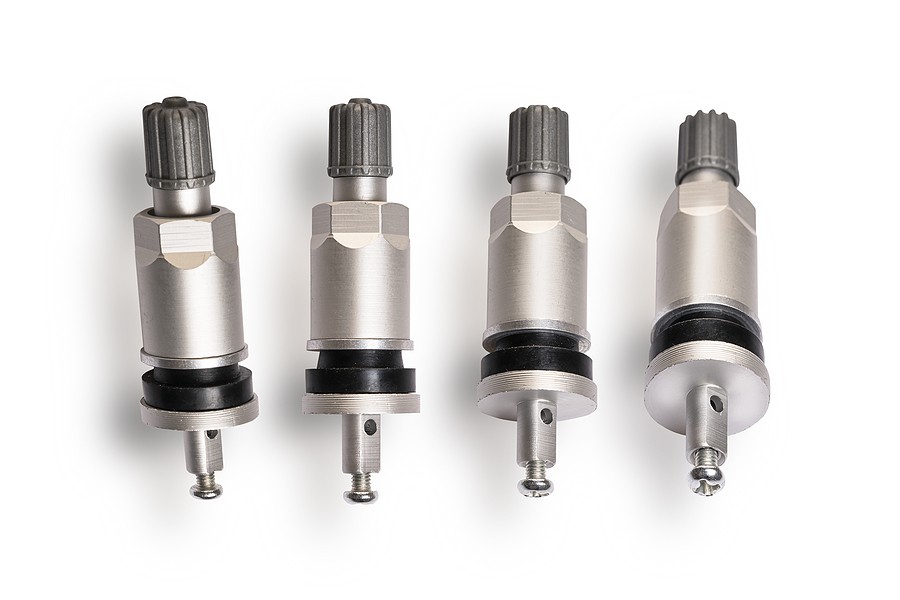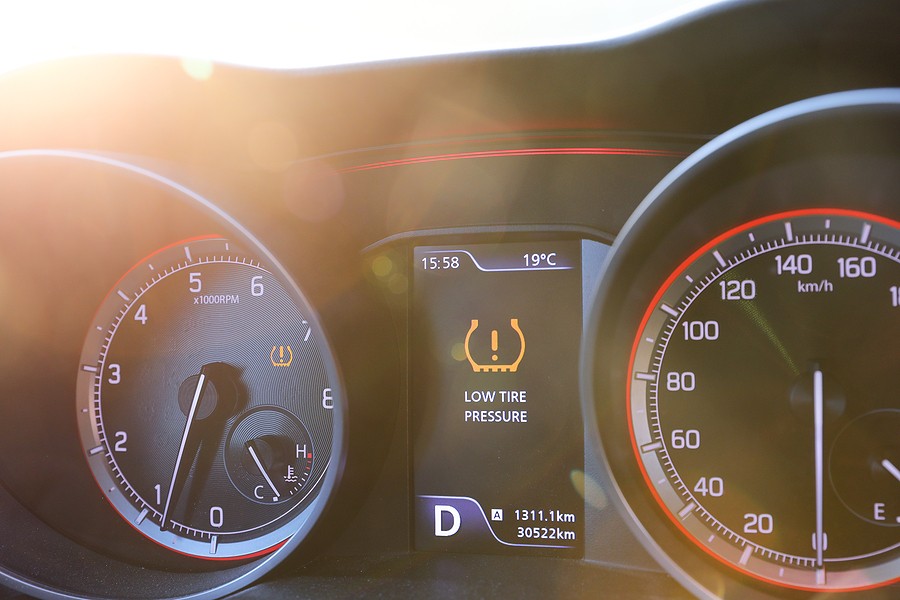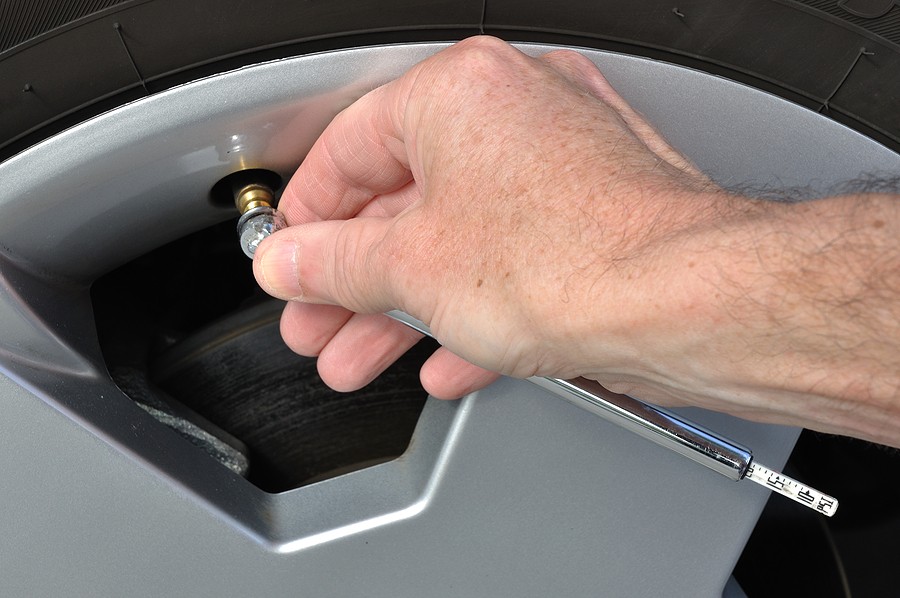The tire pressure sensor is found in the wheel of your car and is responsible for reporting low-pressure issues to the car computer.
These sensors are small, and it's been said by many drivers that they can interfere with tire balance and handling by not working properly.
It's no secret that keeping your tires properly inflated can improve gas mileage and extend the life of your tires. But what if you're not sure whether your tire pressure sensor is working correctly?
This article highlights the top symptoms indicating a faulty tire pressure sensor to answer.

What is the tire pressure sensor, and how does it work?
The tire pressure sensor is an electronic device attached to one or all tires. It detects how much air is in your tires and sends the information to the car's computer system.
The receiving system then calculates if there are any problems, including but not limited to under-inflation, incorrect wheel speed, etc. Finally, the outgoing signal will dictate what the driver needs to do, for example, report low pressure.
How To Tell If Your Tire Pressure Sensor Is Faulty?
First of all, you can check if your car has this system. It is most likely to find on the newer models because it assists in reporting vehicle problems and can even save lives.
In general, there are ten common symptoms indicating that your tire pressure sensor is faulty, including:
#1: Warning light stays on even though tires are inflated
The warning light on your instrument panel is designed to stay on until the issue is resolved. If the warning light is constantly illuminated, it could be because the sensor has detected a problem. Even if you inflate your tires to full capacity, but the tire pressure sensor is faulty, it will still appear as the same issue.
#2: Erratic warnings
The instrument panel warning indicator should turn off once the tires are inflated correctly. However, if your car is still beeping and the warning light has become erratic, the issue could be a tire pressure sensor problem.
You might inflate your tires, but the warning light doesn't go away, and it's only showing up as ‘too high,' which means that there is no problem with your car.
#3: Tire inflates to the right pressure, but warning light stays on
If you inflate your tires to their recommended pressure or lower, nothing changes; this could mean that the TPMS (Tire Pressure Monitoring System) is broken.
If you see low levels on your tire pressures gauge, make sure to check if this illuminates any warning lights on your dashboard or not. The TPMS might be broken if the light continues to blink.
#4: Tire pressure monitors are checked, but the warning light continues to stay on
Two possible reasons would cause your tire pressure monitoring system not to work even after checking it.
First, you might have a faulty tire sensor, or the problem could be with the receiver, which is responsible for receiving signals from the sensors before sending signals to other parts of your car. If this has happened, make sure to take your car to an authorized service dealer as soon as possible.
#5: Four tires are affected by low tire pressures, but TPMS sensors aren't working
It's normal for some cars that four wheels will be affected by low tire pressure, but only one may show up on the dashboard. However, the TPMS (Tire Pressure Monitoring System) will not work if all of your sensors are faulty.
If you're unsure about this, take your car to an authorized service dealer to check further or ask them if they can turn off each sensor, so you know which one is broken.

#6: Warning light doesn't come on when tires are inflated more than the recommended limit
If you inflate your tires too much and notice that the warning light has stopped blinking, but it doesn't go away, then there's a huge possibility that this could be because of a faulty tire pressure sensor. It might show up as ‘too high' instead, but in most cases, it should go away on its own after checking.
#7: Problems with tire pressure sensors but tires are fine
Just because the problem doesn't affect your tires, it doesn't mean that they aren't faulty. If the TPMS is broken, there's a high chance that you could also experience problems like poor fuel economy and uneven tire wear, even if your tires seem to be in perfect condition.
Take your car to an authorized dealer for them to check which part of the system has gone wrong and replace it with a new one immediately.
#8: Not reporting low tire pressures when they're already down
As we mentioned earlier, this means that the TPMS (Tire Pressure Monitoring System) isn't working correctly, and you should take your car to an authorized dealer immediately.
It might be a faulty sensor or a broken TPMS receiver. In either case, you should get it fixed as soon as possible because even if your car seems to be driving perfectly, the tire pressure sensors are crucial for ensuring your safety when driving.
#9: Pressure changes overnight
This could happen because you have a faulty tire pressure sensor or the problem is with the TPMS receiver.
If this happens, you should take your car to an authorized service dealer to check which system is at fault so they can correct it.
#10: Warning light doesn't go away after resetting it
If you notice that the warning light is still on after resetting it, the problem could be with a faulty tire pressure sensor, or there's a problem with your TPMS receiver instead. In either case, you should go to an authorized dealer for them to check which system has failed and have it repaired as soon as possible.

How to check your tire pressure sensor?
Even if you noticed the mentioned symptoms, you still need to confirm that you're dealing with a faulty tire pressure sensor. To do so, follow these steps:
Step#1: Turn your car ignition on
Step#2: Use a tire pressure gauge to check the air pressure in each of your tires. Please write it down somewhere so you won't forget them later.
Step#3: Check if your tire pressure is already low and keep track of all the readings. If it's lower than normal limits, turn off your car engine and check the problem.
Step#4: If you notice that one or more tires are low, but your TPMS warning light isn't coming on, take your car to an authorized dealer for them to check if it's a faulty sensor or not.
Step#5: You can also check if all of your tire pressure sensors are working properly by using a diagnostics device that will allow you to connect directly with each component of your system to know exactly where the problem lies.
When should you replace the tire pressure sensor?
If you're not sure if the TPMS is working properly or if it needs replacing, ask your service dealer to check it for you.
Your tire pressure sensor may need to be replaced anytime soon, especially if it's faulty and doesn't seem to work at all. This will help you ensure that your safety when driving isn't compromised in any way.
How often should you replace the tire pressure sensor?
Most tire pressure sensors will last around ten years. However, there's no accurate way to tell exactly when they should be replaced, so you should check your owner's manual and replace it as soon as you notice that the TPMS warning light is on or if you're not sure about its condition.

How much does a new tire pressure sensor cost?
A new TPMS sensor will cost around $80 to $170. However, if you want to replace it yourself, the entire kit for resetting your TPMS should only cost around $30.
Contact online service providers for more details if you're not sure where to start when looking for a tire pressure sensor replacement kit.
There are several factors to consider when evaluating the tire pressure sensor replacement cost, including:
#1 your vehicle's type
all vehicles are not the same, so their system will also be different.
For example, most modern cars with TPMS use the indirect tire pressure monitoring system, which measures temperature and tire rotations to determine if there's an under-inflated tire or not.
While some other models might still use the direct tire pressure sensor method, each wheel has its sensor.
#2 the tire pressure sensor's features
there might be several other features included in your TPMS kit which will affect the price of your replacement kit.
For instance, the price will be slightly higher if it includes a diagnostic tool to help you know exactly what part is not working properly or how to reset the system.
#3 your vehicle's year, make, and model, not all TPMS are created equally, so what you need may vary depending on the age of your car, truck, or SUV.
You should contact online service providers to check if your replacement kit is compatible with your car's system before buying one.
Check your owner's manual before paying for a new tire pressure sensor replacement kit.

Tire Pressure Sensor Maintenance Tips
As you learned from the previous section, the pressure sensor is extremely important in your vehicle. therefore, it's worth learning about the top 10 tips for preventing premature tire pressure sensor damages, including:
#1 regular maintenance
the first tire pressure sensor maintenance tip is to check your tire pressure and keep it optimal regularly.
#2 get your TPMS repaired if necessary
if your TPMS warning light comes on, you should have someone look into the problem immediately.
repairing or replacing a faulty TPMS can help prevent further damage to its components so it will last longer.
#3 don't let the air out of your tires to check if they need inflating
Letting the air out of your tires can help you notice if there's a problem or not, but make sure that it won't cause any problems in the long run. In other words, never let the air out of your tire unless you're about to inflate them properly with a tire pressure gauge.
Four avoid going off-road whenever possible
if you have to drive through dirt and mud often, this can affect how well your TPMS sensors work as they're exposed to significant impact during these times.
Five don't share a set of wheels with anyone else
whenever possible; try to keep a set of your wheels for yourself. If you have to, make sure that the other person knows how important it is to take good care of them.
Six avoid buying cheap products if possible
buying cheaper replacement products may save you money at first, but they might not be safe enough to use on your vehicle for very long, which defeats their purpose.
Seven don't hit curbs or try jump-starting your car
It would help if you never hit curbs with any part of your tire and suspension system – especially the TPMS sensors- because this will damage them in profound ways. Also, pay attention when starting your car because even sparks can affect the tire pressure sensor's performance. Eight know how to reset the TPMS if necessary
you should know that if your TPMS warning light keeps coming on, you can reset it with a button or a sequence of steps depending on the car model.
#10 Avoid going too cheap tire pressure sensor replacement shops without doing your research
If you have a low budget, you may want to find cheap tire pressure sensor replacement shops near me as fast as possible, but this doesn't mean that they're safe enough for your car. In some cases, they might not only be more expensive but also less effective than their more expensive counterparts.
In general, don't just pick any cheap shops from those listed in online directories unless you've compared them first through online reviews and other feedback.
Replacing Your Tires Pressure Sensor, Which Ones To Choose And Why?
If you're wondering, “where do I buy a tire pressure sensor replacement kit?” the answer is that you can purchase a new one from many online service providers.
However, choosing the right TPMS for your vehicle is more complicated than it seems. Most people make at least one of these three common mistakes when buying their replacement sensors:
#1 not checking if their vehicle's year, make and model are compatible with their specific system
Your car's year, make, and model will determine what kind of sensor you need, which means that it may be safer to call manufacturers directly before purchasing anything online.
#2 buying low-quality products just because they're cheaper
Cheap doesn't always mean better, especially in this case where you have to worry about the safety of your whole family.
#3 buying crappy or re-manufactured products for more money than what they're worth. Some companies indeed offer these services, but be careful because it isn't always necessary. If anything happens to your car due to faulty parts, you'll lose a lot more money in the long run, so don't take chances unnecessarily.
The worst part is that this kind of thing can happen to all 4 TPMS sensors at once for many reasons like hitting curbs, accidents, and other things, making it even more frustrating if your system fails unexpectedly.
Conclusion
If you're wondering “How To Tell If Your Tire Pressure Sensor Is Faulty,” This article highlights the top symptoms indicating a faulty tire pressure sensor to answer.
The most common symptom is that your TPMS warning light comes on, which means it's time for a check-up. You should contact online service providers to see if they have any replacement kits compatible with your car before buying one.



